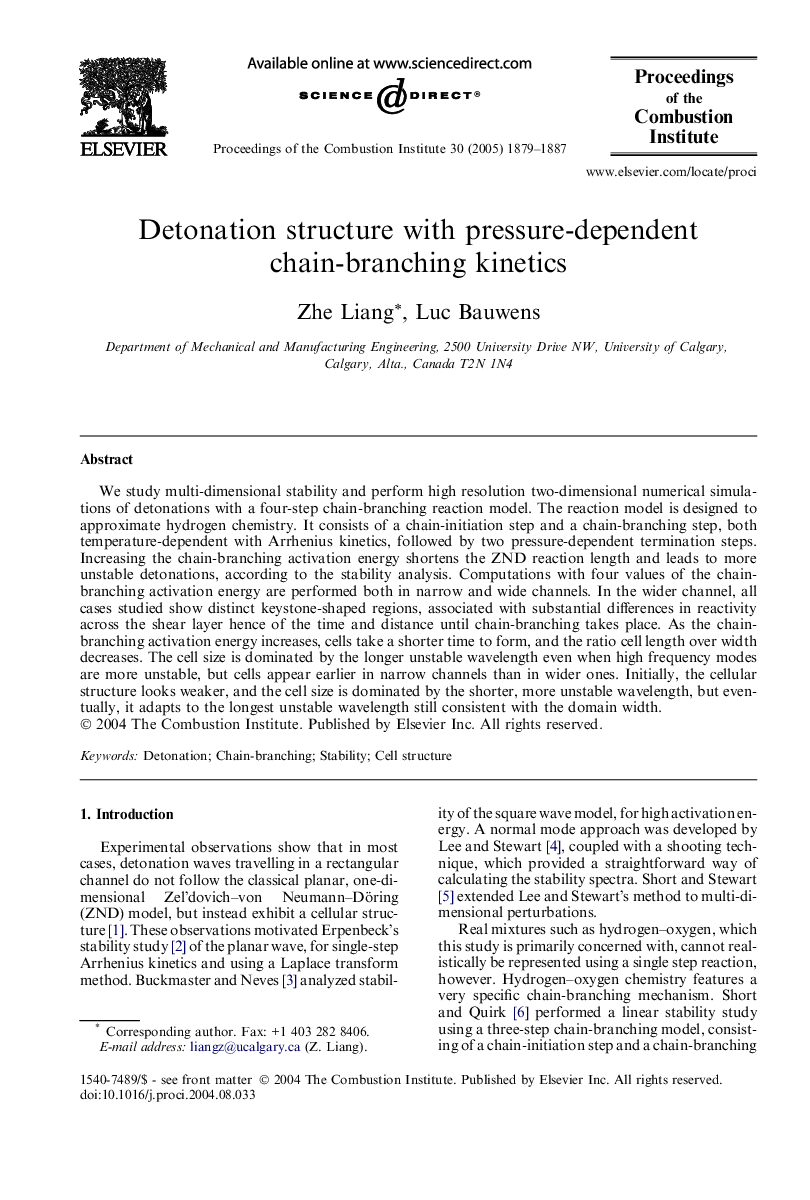| Article ID | Journal | Published Year | Pages | File Type |
|---|---|---|---|---|
| 240928 | Proceedings of the Combustion Institute | 2005 | 9 Pages |
We study multi-dimensional stability and perform high resolution two-dimensional numerical simulations of detonations with a four-step chain-branching reaction model. The reaction model is designed to approximate hydrogen chemistry. It consists of a chain-initiation step and a chain-branching step, both temperature-dependent with Arrhenius kinetics, followed by two pressure-dependent termination steps. Increasing the chain-branching activation energy shortens the ZND reaction length and leads to more unstable detonations, according to the stability analysis. Computations with four values of the chain-branching activation energy are performed both in narrow and wide channels. In the wider channel, all cases studied show distinct keystone-shaped regions, associated with substantial differences in reactivity across the shear layer hence of the time and distance until chain-branching takes place. As the chain-branching activation energy increases, cells take a shorter time to form, and the ratio cell length over width decreases. The cell size is dominated by the longer unstable wavelength even when high frequency modes are more unstable, but cells appear earlier in narrow channels than in wider ones. Initially, the cellular structure looks weaker, and the cell size is dominated by the shorter, more unstable wavelength, but eventually, it adapts to the longest unstable wavelength still consistent with the domain width.
